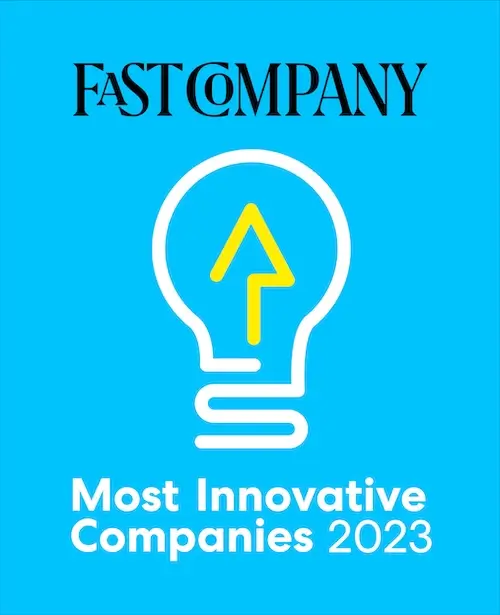One of the more difficult — and rewarding — portions of an in-house lawyer’s job is working with the other leaders and personalities in the organization. It makes sense that when you try to make sure each deal is the most successful and grow your business, you cooperate with each other and present a united front.
At too many organizations, though, the legal department is the “department of ‘no,’” according to the sales leaders, and the sales team is a “bunch of hooligans,” according to some lawyers I know.
During my time as general counsel (GC) of a global cognitive computing company (a different one!), I dealt with this very issue early on. Being on the same page as the sales team meant making certain that contract drafting wasn’t a bottleneck for the sales cycle — and sales weren’t giving the company away with every deal. As the chief legal officer of the company, I had to improve compliance and reduce risk throughout the company. But if my team and I were seen as a “bottleneck,” our role as the organization’s protectors would have been undermined — and, of course, if sales didn’t sell anything, the company wouldn’t have made any money.
The way we addressed this challenge is repeatable in any organization: it means adopting the right tools to allow legal departments, legal professionals, sales teams, and other divisions to work together more proactively. As a strategic legal executive, the GC can especially lead the way by adopting technology and best practices to make the legal team more responsive, more efficient, and more collaborative. The core of this is choosing one legal platform that can help make all of these things happen simultaneously.
Building Relationships
One of the key things that sales focus on is building relationships between customers and the salesperson. If the customer doesn’t feel comfortable with their salesperson, they’re not going to buy the product.
One thing that I always point out when speaking with lawyers (especially when they have to work with software developers) is that the primary job of an in-house lawyer is describing relationships. In fact, I usually point out that lawyers write “relationship code.” But for some reason, there’s always some breakdown between sales and legal.
One way to avoid this is actively having the legal team and the sales team working closely together — and within integrated systems or contract management software for your firm. Having your legal and sales teams completely siloed from each other, working in different “worlds,” is a recipe for ongoing disaster. Instead, by communicating — both in human ways and through software integrations — legal and sales teams can understand each others’ goals and concerns.
As a result, they can find out where there is friction, work to smooth out those areas, and expedite the sales cycle, keeping everyone happy and the business flowing.
Centralizing data with a legal management platform
Ensuring there is constant access to data is another way to encourage strong collaboration between legal and sales. A centralized storage and analysis system and legal management platform like ContractPodAi Cloud easily connects with what the sales team uses for customer relationship management, easing the transition and making accessing information simple.
More specifically, having data flowing from one system to another translates into stakeholders knowing what is going on with deals, contracts, and finances and creates one space for document storage. Adopting a comprehensive legal digital transformation plan — and investing in contract lifecycle management, for example — provides insight on turnaround times, clause selection, and negotiation tactics, amongst other information.
What’s more, when information is centralized through a repository, discussions about such information become easier and saves time. You no longer need to send emails back-and-forth or repeatedly dig around on various desktops, looking for a prior contract version (and taking up valuable time!). You can adopt the right legal technology and have appropriate audit trails, task management, document history, change history — and more — at your fingertips and it is web-based.
However, centralizing data and making it available isn’t the endpoint. With workflow automation and design, the legal department — in cooperation with business teams — can assign tasks and define standard workflows for the company. When it comes to company documents, it can route templates and requests to the appropriate parties immediately. For paper received from third parties, it can use a modern legal management platform — and leverage AI and cognitive technologies — to identify and control risks.
Ultimately, legal can start to manage requests in a more structured manner, which keeps everyone in sales, finance, procurement, and elsewhere aligned with the target outcome. On the other hand, sales can remain aware of deadlines, task orders, and requirements for compliance from the top down. This translates into overall efficiencies and — hopefully — quicker sales cycles with higher revenues.
Expediting without extra risk
Of course, for most lawyers, one of the difficulties with working with sales teams is the idea that sales “doesn’t care” about the risk to the company. On the other hand, it’s pretty clear that the sales team wants to make money for the company. (If not, we’re all going to find ourselves out of work sooner rather than later!)
One of the goals, then, should be increasing speed without increasing risk. Many organizations have playbooks for legal, which are often — but not always — shared with sales. If you’re not sharing yours with the sales team and explaining the choices — or trying to do the same — perhaps communicating the reasoning behind legal’s choices will get everyone on the same page. For instance, if they know what is “nice-to-have” versus “absolutely necessary” while drafting deal documents, business teams can effectively express those to counterparties in a deal. This means going beyond “preferred-fallback-1 or fallback-2” structures that many organizations have. To make this effective, playbooks need to consider deal size, timing, and other factors.
Investing in your legal department’s technology drives cooperation and compliance also. For example, ContractPodAi’s one legal platform facilitates contract lifecycle and IP management, and much more. (It’s really only limited by your imagination!) More specifically, ContractPodAi Cloud provides important legal obligations and key metrics concerning deals and companies’ risk appetite. Integrating those with your organization’s other tools, such as those for customer relationship management and finance, allows business teams to generate documents based on the information in those tools and keeps the data flowing from system to system. This speeds up cooperation and makes inputting, in general, less reliant on manual processes.
Looking at Opportunities Ahead with a legal management platform
Clearly, then, there’s a massive opportunity for legal to demonstrate higher value across the entire business — through cooperation with sales and the adoption of new legal management platforms and technology. By seeking this collaboration, and pulling and using data from disparate systems, legal teams can work better with sales teams, enhancing the sales cycle, itself, and improving the business overall.
By using tools like ContractPodAi Cloud, in particular, legal leaders and sales executives can together address all of the issues above, avoid risk, and grow revenue. If you’re interested in learning more about our end-to-end legal management software, check out our CLM Impact Research Report.
Author:

Jerry Levine
Connect with us on Linkedin











